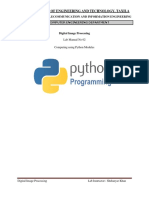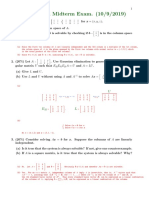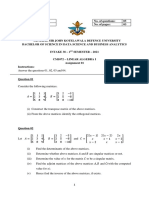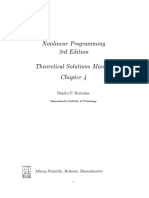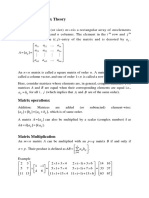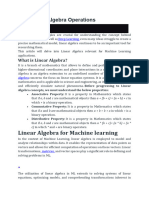0% found this document useful (0 votes)
20 views11 pagesML Lab1
The document outlines the implementation and usage of Python's basic libraries such as Statistics, Math, Numpy, and Scipy, detailing methods for mathematical operations, array attributes, and matrix manipulations. It explains the functionalities of numpy for creating and reshaping matrices, performing operations, and calculating determinants and eigenvalues using scipy. Additionally, it provides an overview of NumPy and SciPy, highlighting their features and applications in numerical and scientific computing.
Uploaded by
sureshsoori2655Copyright
© © All Rights Reserved
We take content rights seriously. If you suspect this is your content, claim it here.
Available Formats
Download as PDF, TXT or read online on Scribd
0% found this document useful (0 votes)
20 views11 pagesML Lab1
The document outlines the implementation and usage of Python's basic libraries such as Statistics, Math, Numpy, and Scipy, detailing methods for mathematical operations, array attributes, and matrix manipulations. It explains the functionalities of numpy for creating and reshaping matrices, performing operations, and calculating determinants and eigenvalues using scipy. Additionally, it provides an overview of NumPy and SciPy, highlighting their features and applications in numerical and scientific computing.
Uploaded by
sureshsoori2655Copyright
© © All Rights Reserved
We take content rights seriously. If you suspect this is your content, claim it here.
Available Formats
Download as PDF, TXT or read online on Scribd
/ 11

























